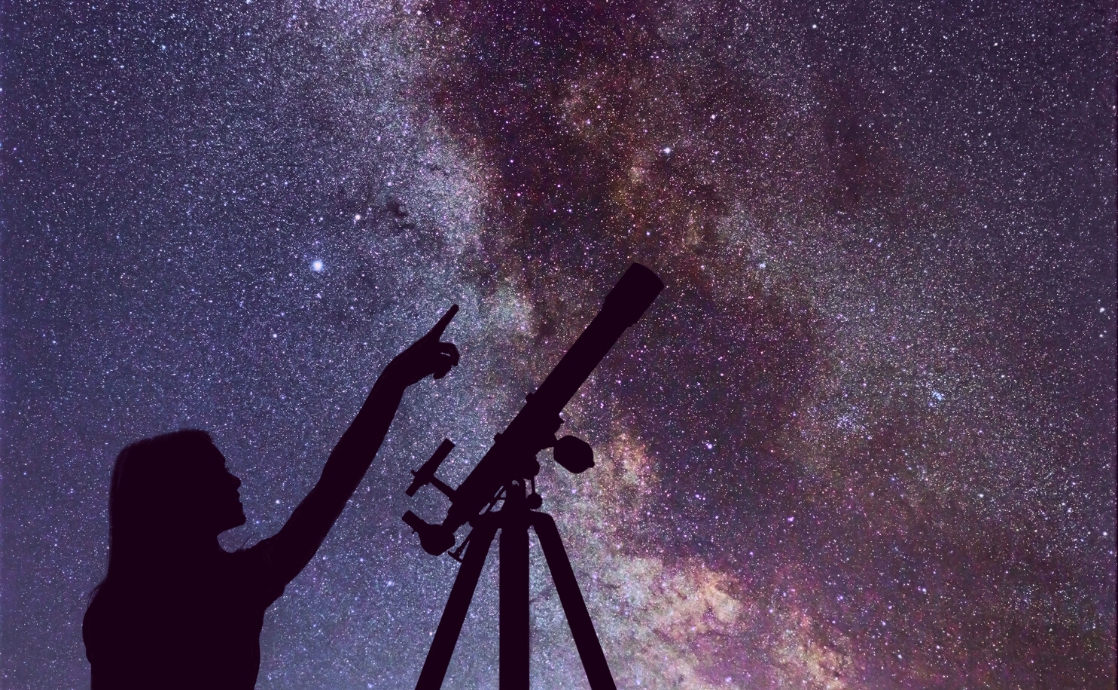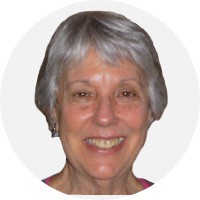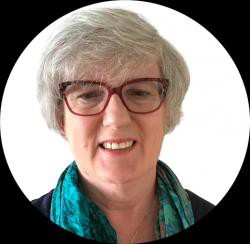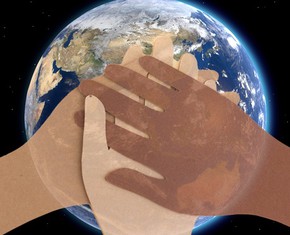The views expressed in our content reflect individual perspectives and do not represent the authoritative views of the Baha'i Faith.
I recently saw the movie “Hidden Figures” and also read the book “The Rise of the Rocket Girls.” Both tell stories about real-life women who rose above the prejudices of their times to make extraordinary contributions to science, mathematics, and technology.
The film and the book reminded me of the Baha’i principle of the absolute equality of women and men, as expressed in this quotation from the writings of Abdu’l-Baha:
… among the teachings of Baha’u’llah is the equality of women and men. The world of humanity has two wings – one is women and the other men. Not until both wings are equally developed can the bird fly. Should one wing remain weak, flight is impossible. Not until the world of women becomes equal to the world of men in the acquisition of virtues and perfections, can success and prosperity be attained as they ought to be.
RELATED: Scientific Women, and Why We Need More of Them

Perhaps by coincidence, a few days ago my friend Heather Harvey told me about her Aunt Gladys A. Harvey, whose achievements included being Canada’s first female astronomer. The more I learned about Heather’s aunt, the more curious I became. Finally, we decided to co-author this article so that her aunt’s story could be shared today on International Astronomy Day.
Q: To begin this conversation, Heather, could you please explain your Aunt Gladys’s work, and how her specialty in radio astronomy is different from the usual work of astronomers.
A: Yes! When I was a child, Aunt Gladys told me that astronomers usually study stars with their eyes, while radio astronomers listen to stars.
She worked for the Dominion Radio Astrophysical Observatory of the Canadian National Research Council in Ottawa from 1948 to 1976. Gladys had a number of research interests including observing solar radio emissions; astrophysical measurements of the brightness of specific radio emissions, especially bursts that coincided with solar flares; and radio emissions from distant galaxies.
For the first twenty years of her career, she worked mainly at the Goth Hill Observatory in Ottawa, and then became affiliated with the observatory in Algonquin Park, northeast of Ottawa. From time to time she travelled to a number of American telescope installations to take observations and work with other scientists. Some of this I have known since childhood, but some of it I learned many years later — in fact just a few months ago — when an article was published as part of Canada’s celebration of women in STEM (Science, Technology, Engineering and Mathematics).
Q: Fascinating. Heather, how and when did Gladys become a radio astronomer?
A: In 1948 she applied to work as a research officer in radio astronomy with the National Research Council in Ottawa. At that time the field was in its infancy so there were no specific courses or credentials leading to this work. Gladys, with her bachelor’s degree in physics and mathematics and a master’s in mathematics, was well-qualified.
Throughout her career she witnessed discrimination against women — especially married women — as reflected in their work assignments, status, and pay. This brief story will help to illustrate the point: Adding to the body of knowledge in her field, she published 32 papers, usually with her initials rather than her name. I remember her stories about attending conferences or working on projects across Canada, the U.S. and England, where people assumed she was a man and assigned her shared accommodation with another man. Nevertheless, she enjoyed her relationships with colleagues and especially welcomed the challenges of research.
I think her professional success is an example of the Baha’i teachings about the equality of women and men — consistent with this statement from the Baha’i International Community:
Men must use their influence … to promote the systematic inclusion of women, not out of condescension or presumed self-sacrifice but out of the belief that the contributions of women are required for society to progress.
Q: She sounds like such a pioneer for women! Please tell us more about her as a person.
A: When I was a child in Montreal, my family would drive three hours to visit extended family in Ottawa on long weekends and holidays. My other relatives were great talkers, but Gladys was quiet, especially with children. I remember going with her to the radio astronomy observatory, where she warned us not to stand in front of the equipment or we could show up in the wrong place in an experiment. She dressed stylishly, had very erect posture, and had braids piled high on her head.
Gladys and Uncle Garth were committed to education and lifelong learning and would give books to all of us cousins. In the words of Abdul-Baha: “Among the greatest of all great services is the education of children, and promotion of the various sciences, crafts and arts.”
RELATED: Science as a Resource for Everyone
Q: How did you learn more about her career and other details of her life?
A: When Uncle Garth died in 2018, I joined my cousins at his home in Shawinigan Lake, British Columbia, to help sort through personal belongings. Gladys had died several years earlier, and we found photos and countless other mementos. The family decided I would be the custodian of Gladys’ items, because we thought that, since Gladys was one of the first Baha’is in Ottawa, the local Baha’i Archives might be interested in some of the items. So I packed them into an old suitcase and brought them back to Ottawa. What a treasure trove I found! Perhaps by yet another coincidence, some of these documents turned out to be useful to a radio astronomer within the National Research Council, who tracked me down in 2019 while trying to piece together some of their own records.
Q: I’m beginning to think that her achievements in astronomy were in many ways the outcome of her personal life and her spiritual beliefs as a Baha’i. What do you think?
A: You may be right about that. Born in the small Ontario town of Aldershot, Gladys was raised by her paternal grandmother and father in an ivy-covered Edwardian house. Her childhood encouraged immersion in literature, drawing, piano, horsemanship, and needlework. When she was fifteen her grandmother died, so Gladys joined her mother in the larger city of Hamilton. A gifted student, Gladys completed high school that year, and at age sixteen began her studies of mathematics and physics at McMaster University. Her graduation with a master’s in mathematics before she turned 21 was as rare an event then as it would be now. She continued her education at Toronto’s Ontario Institute for the Study of Education, which led to teaching high school art and mathematics in the small town of Leamington; working as an inspector in a war plant; tutoring returning soldiers; and finally joining Canada’s National Research Council.
As if that wasn’t enough, Gladys was proficient in many diverse fields of achievement including music, bowling, flying, riflery, portrait painting, dramatics, drafting, and even solving a Rubik’s Cube in 2 min. 15 seconds. She channeled much of that energy into her service within the Baha’i Faith, having registered herself as a Baha’i in 1948. She used to say “I am not much of a joiner” – but she did join with Baha’is in Ottawa, throughout Canada, and even throughout the world in many ways.
Q: What do you think attracted her to the Baha’i Faith?
A: Gladys was especially attracted to the concept of progressive revelation — that truth is revealed through a series of divine messengers, each suited to the needs of their time and place. From that over-arching idea, she recognized the unity of all humanity.
Gladys often spoke about the Baha’i principle of the harmony of science and religion. Her service to the faith included committee work, producing with Garth the Canadian Baha’i News, serving on the Ottawa Spiritual Assembly, hosting conferences, and even more. Frankly it would take more articles to cover it all. Gladys liked to do whatever was required to the best of her ability without being concerned with whether others noticed or not.
Q: If you had to summarize what we might learn from her, what would you say?
A: Even though she was a scientist of some repute, she was too humble to seek accolades. Indeed many people who knew her in her later years did not even know about her being Canada’s first woman astronomer. I don’t think she would have minded. She knew that science and technology advance through the input of many people. She did her work with love for learning and a desire to serve.
Q: Thank you for sharing, Heather. In her honor, let’s close with this very appropriate quotation from Abdu’l-Baha, which comes from a provisional translation of his Tablet of the Universe:
… thy Lord hath created in these vast heavens manifold bodies without limit or number, which the minds of men can neither compute nor encompass. Souls are bewildered when they attempt to understand them and confounded by a mere glimpse of them.

















Comments
Sign in or create an account
Continue with Googleor